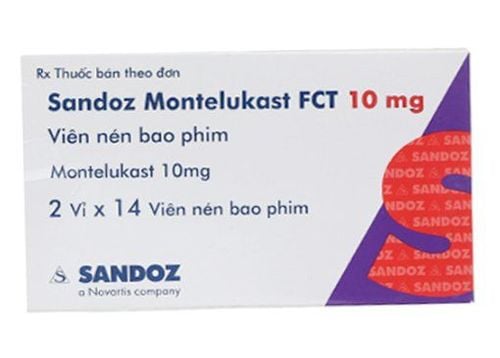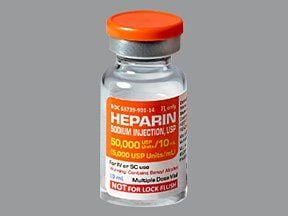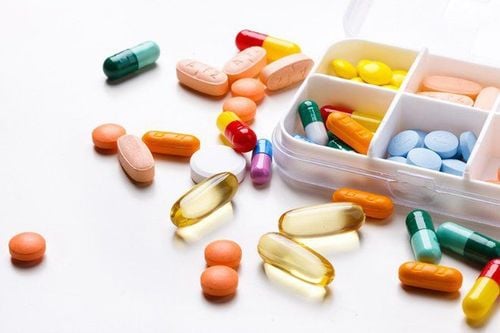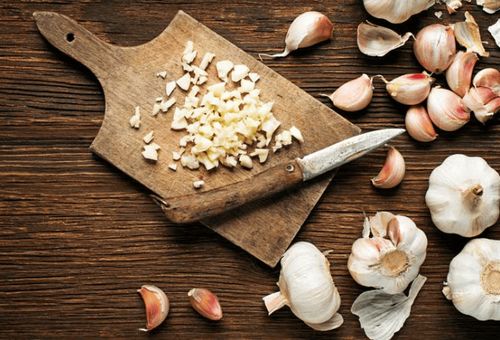This is an automatically translated article.
When using garlic and the drug warfarin may increase the risk of bleeding in patients. This is an interaction that requires special attention when treating disease. So how do garlic and the anticoagulant Warfarin interact?
1. Garlic and Warfarin
Garlic is a very familiar spice in every family's kitchen. Not only makes the dishes more attractive and delicious, garlic also has many health benefits. Garlic contains many nutrients such as iron, B vitamins, magnesium, potassium, calcium, phosphorus, manganese, etc. Along with that, garlic contains organic compounds such as sulfur, glycosides, germanium, selenium and the antibiotic active ingredient Allicin. proven to be effective in preventing colds and flu, slowing down the process of osteoporosis, enhancing estrogen hormone, inhibiting platelet accumulation, preventing blood fat formation,...
Meanwhile, Warfarin drug Coumarin is an anticoagulant drug belonging to the group of coumarin anticoagulants, easily soluble in water, can be administered orally or intramuscularly. Warfarin's mechanism of action is to prevent the synthesis of some clotting factors in the liver. Warfarin is indicated for the prevention and treatment of blood clots in arteries and veins, myocardial infarction, pulmonary infarction, stroke,...
MORE: What should be avoided in taking anticoagulants?
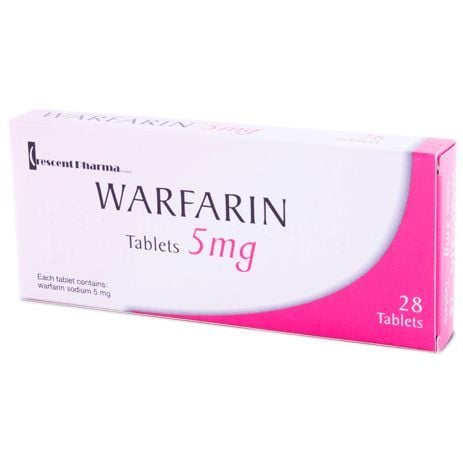
Thuốc Warfarin có công dụng điều trị bệnh huyết khối trong động mạch
2. Interaction between garlic and anticoagulant Warfarin
Some studies have shown that garlic can increase the effects of anticoagulants, platelet inhibitors, and thrombolytics. Taking garlic with anticoagulants such as Warfarin can increase the risk of bleeding in patients. Antiplatelet activity that causes bleeding risk is found in fresh garlic, garlic oil and other garlic products. There have been many reports of bleeding complications when following a diet high in garlic. In addition, reports show that the interaction between garlic and Warfarin leads to an increase in the INR (International Normalized Ratio).Therefore, when using garlic and the anticoagulant Warfarin, the patient should seek immediate medical attention if there are symptoms of bleeding, unusual bruising or other symptoms of bleeding such as dizziness, red or black stools, cough or vomiting fresh blood, severe headache, prolonged bleeding from cuts, increased menstrual volume, vaginal bleeding, nosebleeds, bleeding gums,...

Đau đầu là một dấu hiệu cho thấy sự tương tác giữa tỏi và thuốc Warfarin
3. What to do to prevent the interaction between garlic and the anticoagulant Warfarin?
To prevent the risk of possible drug interactions, before using Warfarin, the patient needs to tell the doctor all the medicines they are taking, including prescription drugs, over-the-counter medicines, and medicines from sources. In general, patients should avoid using a lot of garlic and garlic products while using anticoagulants such as Warfarin. In patients who have taken a lot of garlic prior to anticoagulant, antiplatelet or thrombolytic therapy, the patient should be closely monitored for early detection of possible drug interactions.
During the course of treatment with Warfarin, the patient needs to see a doctor according to the schedule. The doctor will perform a clinical examination and order tests to evaluate the effectiveness of treatment and detect hematological complications early.
To ensure safety and monitor the condition of the disease after using the drug, patients should perform periodic health check-ups or follow-up appointments as prescribed by the doctor. At Vinmec International General Hospital, there are now a full range of tests and clinical examinations to check the patient's health status, monitor the time after using the drug of the patient. The entire examination and testing process at Vinmec is carried out by a team of experienced and qualified medical doctors and modern medical facilities, so it can give accurate results, helping doctors advice on the best treatment.
Please dial HOTLINE for more information or register for an appointment HERE. Download MyVinmec app to make appointments faster and to manage your bookings easily.
References: drugs.com, ncbi.nlm.nih.gov




